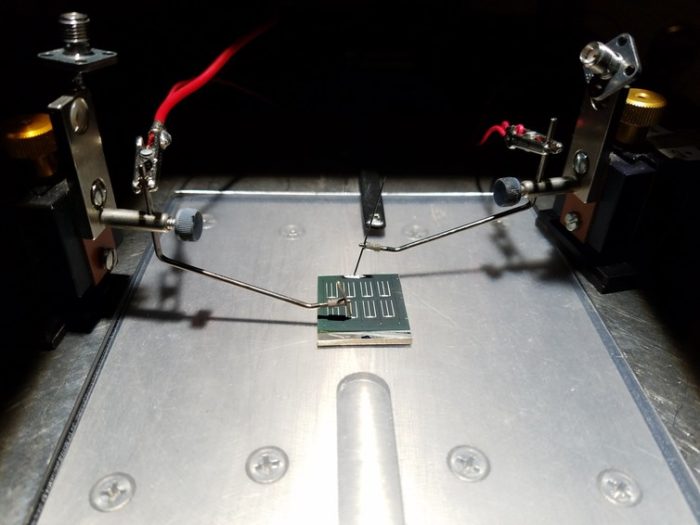
Image Credit: Tara Dhakal
Global demand for energy is increasing by the hour as developing countries move toward industrialization. Experts estimate that by the year 2050, worldwide demand for electricity may reach 30 terawatts (TW). For perspective, one terawatt is roughly equal to the power of 1.3 billion horses.
Energy from the sun is limitless – the sun provides us 120,000 TW of power at any given instant – and it is free. But today solar energy provides only about 1% of the world’s electricity. The critical challenge is making it less expensive to convert photo-energy into usable electrical energy.
To do that, we need to find materials that absorb sunlight and convert it into electricity efficiently. In addition, we want these materials to be abundant, environmentally benign, and cost-effective to fabricate into solar devices.
Researchers from around the world are working to develop solar cell technologies that are efficient and affordable. The goal is to bring the installation cost of solar electricity below US$1 per watt, compared to about $3 per watt today.
At Binghamton University’s Center for Autonomous Solar Power (CASP), we are investigating ways to make thin film solar cells using materials that are abundant in nature and nontoxic. We want to develop solar cells that are reliable, highly efficient at converting sunlight to electricity and inexpensive to manufacture. We have identified two materials that have great potential as solar absorbers: pyrite, better known as fool’s gold because of its metallic luster; and copper-zinc-tin-sulfide (CZTS).
Seeking the ideal material
Today’s commercial solar cells are made from one of three materials: silicon, cadmium telluride (CdTe), or copper-indium-gallium-selenide (CIGS). Each has strengths and weaknesses.
Silicon solar cells are highly efficient, converting up to 25% of the sunlight that falls on them into electricity. Silicon also is very durable. However, it is very expensive to process silicon into wafers. And these wafers have to be very thick (about 0.3 millimeters, which is thick for solar cells) to absorb all of the sunlight that falls on them, which further increases costs.
Silicon solar cells – often referred to as first-generation solar cells – are used in the panels that have become familiar sights on rooftops. Our center is studying another type called thin film solar cells, which are the next generation of solar technology. As their name suggests, thin film solar cells are made by putting a thin layer of solar absorbent material over a substrate, such as glass or plastic, which typically can be flexible.

These solar cells use less material, so they are less expensive than crystalline solar cells made from silicon. It is not possible to coat crystalline silicon on a flexible substrate, so we need a different material to use as a solar absorber.
Although thin film solar technology is improving rapidly, some of the materials in today’s thin film solar cells are scarce or hazardous. For example, the cadmium in CdTe is highly toxic to all living things and is known to cause cancer in humans. CdTe can separate into cadmium and tellurium at high temperatures (for example, in a laboratory or house fire), posing a serious inhalation risk.
We are working with pyrite and CZTS because they are nontoxic and very inexpensive. CZTS costs about 0.005 cents per watt, and pyrite costs a mere 0.000002 cents per watt. They also are among the most abundant materials in the Earth’s crust, and absorb the visible spectrum of sunlight efficiently. These films can be as thin as 1/1000 of a millimeter.
So far, cells are inefficient
We need to crystallize these materials before we can fabricate them into solar cells. This is done by heating them. CZTS crystallizes at temperatures under 600 degrees Celsius, compared to 1,200 degrees Celsius or higher for silicon, which makes it less expensive to process. It performs much like high-efficiency copper indium gallium selenide (CIGS) solar cells, which are commercially available now, but replaces the indium and gallium in these cells with cheaper and more abundant zinc and tin.
So far, however, CZTS solar cells are relatively inefficient: they convert less than 13 percent of the sunlight that falls upon them to electricity, compared to 20% for more expensive CIGS solar cells.
We know that CZTS solar cells have a potential to be 30% efficient. The main challenges are 1) synthesizing high-quality CZTS thin film without any traces of impurities, and 2) finding a suitable material for the “buffer” layer underneath it, which helps to collect the electric charges that sunlight creates in the absorber layer. Our lab has produced a CZTS thin film with seven percent efficiency; we hope to approach 15% efficiency soon by synthesizing high-quality CZTS layers and finding suitable buffer layers.
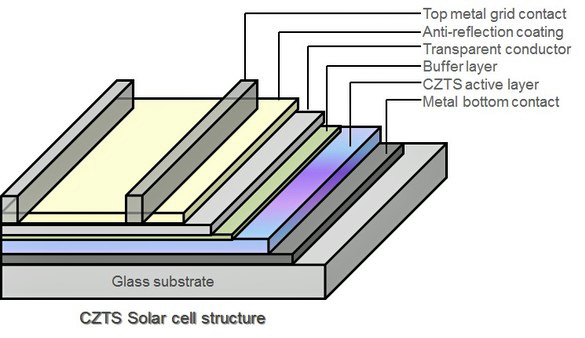
Pyrite has a stability problem
Pyrite is another potential absorber that can be synthesized at very low temperatures. Our lab has synthesized pyrite thin films, and now we are working to layer those films into solar cells. This process is challenging because pyrite breaks down easily when it is exposed to heat and moisture. We are researching ways to make it more stable without affecting its solar absorbency and mechanical properties. If we can solve this problem, “fool’s gold” could turn into a smart photovoltaic device.
In a recent study, researchers at Stanford University and the University of California at Berkeley estimated that solar power could provide up to 45% of U.S. electricity by 2050. To meet that target, we need to keep driving down the cost of solar power and find ways to make solar cells more sustainably. We believe that abundant, nontoxic materials are key to realizing the potential of solar power.
Tara P. Dhakal is an assistant professor of electrical and computer engineering at Binghamton University, State University of New York. This post was originally published at The Conversation.
Weekly Newsletter
Get building science and energy efficiency advice, plus special offers, in your inbox.





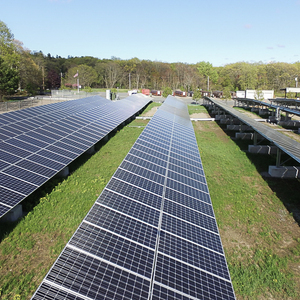
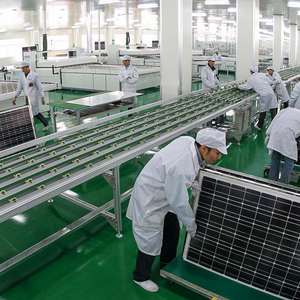

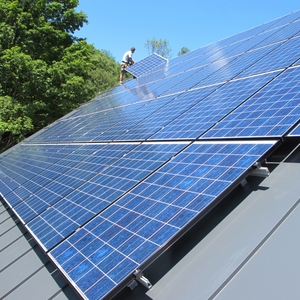






16 Comments
Is high efficience really that important?
It would be great if they could reach 30%. However if the price can be dropped sufficiently even 13% efficient cells would be perfectly acceptable. There is a LOT of available space out there. Solar shading for parking and walkways, roofs of industrial complexes, etc.
Just not those solar roadways! A bad idea supported by worse math.
Perovskites have been hitting the mid-teens on efficiency
Perovskites on their own are in the mid-teens on efficiency but have as-yet unresolved stablity/longevity issues. It's possible to layer a perovskite using a different spectrum over a silicon cell and hit north of 30%, but there are no commercial products contemplated until the other issues with perovkites get resolved.
Efficiency is important for siting reasonable amounts of power at the load where real estate is constrained (say, on your roof top), less so for utility-scale solar farms. But with the solar farms there is the additional cost of the greater amount of real estate, and the grid infrastructure required to get the power to the load. Efficiency is still worth paying something for when it's on the ratepayer's side of the meter.
What, not a fan of "Solar frickin' roadways!" ? :-) For the same amount of money per mile you could build 5-10x the amount of "solar-shaded roadways", keeping some the solar glare and most of the rain off the pavement and cars. As a technical engineering challenge the solar roadways are interesting due to the range and complexity of problems that need to be solved, but it's absolutely NOT a solution for power generation, and never will be.
Efficiency is not the problem with solar today
I agree w/ Nathan. Running around talking about "inefficient solar" is harmful; it dissuades people from considering solar. Today, higher efficiency panels simply translates into less space needed, and today available space for solar is not the problem. Cost per watt (or per MWh), on the other hand, is still a significant factor.
It's great to keep moving forward on efficiency as well as improved materials for lower cost and environmental impact. But the "solar is not efficient" meme needs to go away, and soon.. Heck, according to the EIA, existing coal plants are only 32% efficient. And nobody runs around saying "oh, but coal plants are so inefficient!"
@Dana, True that some rooftops are space-constrained. But my roof has room for only 12 relatively inefficient 230W panels, in snowy Minnesota, and I still produce upwards of 75% of my home's electrical use. Space-constrained homes might just need more LEDs to make solar work for them. ;)
Today's efficiency's not a problem but low efficiency would be
The cost of PV cells is a decreasing fraction of the cost of a solar installation. Many of the other costs scale with area, not power, so the option of sacrificing efficiency to reduce cost can come around and bite you from behind--at some point low efficiency cells are uninteresting even if they are zero cost, because the cost to install them would be more than the cost to buy and install conventional modules.
Also, it's easy to find room on the roof to support LED lights, a stove, a water heater, and a connection to GBA.com, but it becomes necessary to utilize the space well if you want to also provide heat in a cold climate and charge an electric vehicle.
Much of Residential PV are Crimes Against Efficiency and Nature
I had written a longer response, but while I was typing I hit a button on the keyboard that made all my comments totally disappear from the box before I could post them. That is frustrating, so here is the short version.
1. I’m convinced that most people (residential) could care less about PV efficiency (at any level) and they don’t even know what it means. They typically do not take action to decrease their energy demand before installing PV. There is no hope of meeting electricity demand with available roof space.
2. Power Purchase Agreement (PPA) providers are even more socially irresponsible. I get around central Maryland A LOT, and am constantly seeing new residential PV installations ( with PPA signs in the yard) that have very little respect for efficiency, in terms of azimuth and shading. It is clear that PPA purchase providers are winning big, without any need or concern for efficiency.
That 1 and 2 are facts of current residential PV is a crime against efficiency and nature. It would disturb me even more if I was involved in efforts to improve PV conversion efficiency.
Eric hinted at some of this saying maybe people need more LEDs, but that is an understatement. Current residential PV deployment activity is like installing a highly efficient engine in a car with square wheels. It’s like as if nature evolved a tree with leaves capable of highly efficient photosynthesis, but that same tree featured many, huge branches that had no leaves at all.
I am the author of the article currently on this GBA website called Making an Old Tract House Sunnier and More Efficient. See https://www.greenbuildingadvisor.com/homes/making-old-tract-house-sunnier-and-more-efficient.
In no way do I claim to be an efficiency expert, or claim that I did the best that could be done. But I at least tried to recognize the big picture of efficiency. I would no sooner apply PV without reducing my demand (from 16 kWH/yr. to about 6772 kWH/yr), and trying to respect azimuth/shading, than I would put square wheels on my car. Although I have a small roof area, it is enough to currently provide about 125% of my load (hope to have electric car coming).
Response to Rick Miller
Rick,
You're half right. Of course installing LEDs makes sense. But envelope improvements? Maybe not. PV is getting so cheap that PV now beats a great many envelope measures. We may need to readjust our thinking in light of this fact.
For more on this topic, see How Much Insulation is Too Much?
Martin, You are all about Money
I dispute your assertion that I am half right, and resent that everything is driven by money considerations, that are far too often just speculations in the first place.
Actually, I have just about had enough of GBA, who in the end have convinced me that your are Moneygreeners--meaning you just may have little interest in green principles and design, beyond the making money from it. I have reduced my comments and following of GBA in recent times, and will do so even more. It is likely that I will not even seen your response to this.
Response to Rick Miller
Rick,
I certainly hope you reconsider -- we'd like to continue to hear your voice on GBA. Stay a member of our community.
I can assure you (although you may not believe me) that I am not interested in making money from "green" marketing. I am, however, interested in energy modeling results, energy monitoring data, and analysis of costs, because these tools help green builders know which investments make the most sense. Without this type of analysis, we are flying blind.
Money Money Money
Rick, I've always felt that GBA's articles about cost tradeoffs are not so much about making money for the people designing or installing energy-saving measures, as much as recognizing that most homeowners/buyers have finite financial resources, and must make tradeoffs when they choose between options.
Yes, it would be great to be super-insulated and have on-site PV-powered mini-split heat. But perhaps your bank account simply can't afford that. Maybe you can super-insulate, or have on-site PV. In that case it's worth looking at bang-for-the-buck type scenarios (with "bang" being measured in avoided emissions).
With higher efficiency you could cover 150% (@ Eric, #3)
With twice the efficiency you could cover 150% of your current power use...
...and cover power for charging an electric vehicle.
LEDs are the dirt-cheap lowest hanging fruit on the way to Net Zero, far cheaper nega-watts than even buck a watt PV power generation would be on a lifecycle basis. Lighting as a fraction of the total energy use in the average US home is somewhere between 5-15% of the total, far behind hot water heating heating and air conditioning, and changing from CFLs (or even incandescents) to LEDs is unlikely to make or break a PV decision- it's a couple of panels at most.
In your neighborhood drainwater heat exchangers are probably still a better lifecycle investment than more PV, but it depends on how much you use your shower, and how you heat your water.
My own rooftop can't accommodate a dozen 15% efficiency 230 watt panels, (maybe six without building on some wacky odd-angle mounting structures) and my shading factors would miss 40% of the available sunshine, currently being robbed by those pesky trees (at ATROCIOUS energy conversion efficiency :-) ), and would not cover more than 20-25% of my family's annual power use, despite all high-efficiency lighting and appliances. (Must be binge-watching Korean TV & Bollywood chick-flicks on NetFlix that's driving the power bill, yeah thatzit... :-) )
Rick: Doesn't MD have some standards around PV orientation & shading factors? Sounds like there are a lot of hack-installers in your local PV biz...
Pointing out that different approaches have different costs & benefits isn't the same as "Moneygreener" behavior. In a world of finite capital and changing costs, it's important to keep track of the moving cost/benefit of different approaches. What may have been a clearly cost-effective super-insulation level in one place and time is not always going to be the same at another place & time. The exponential cost curve decay on PV has not stopped, and has been crossing all sorts of thresholds in recent years. The environmental footprint of a foot of foam under a basement slab has also changed, but it's lifecycle benefit on a cost OR environmental basis may no longer be rational, as heat pump & PV efficiencies have improve and their lifecycle (environmental) costs have fallen.
Question for Dana [Response number 2]
I'm trying to understand the meaning of the following sentence:
It's possible to layer a perovskite using a different spectrum over a silicon cell and hit north of 30%
Are you saying that two different photocells can be stacked one atop the other with the two collecting radiation [photons] at different wavelengths? If I understand correctly, in this case a silicon based photocell would serve as a substrate for a perovskite film. Is that the correct picture? If I have it correct, my next question would be why stop at two layer systems so long as you can grow outer films with high transmission coefficients for the wavelengths of photons passing through the outer film(s). Does that make sense?
You've got it! (@ Antonio Oliver, #11)
Yes, thin films can be applied on top of somewhat standard silicon PV to utilize more spectrum. It lowers the total amount of light that gets to the silicon cell, but that's more than made up for by the output of the thin film cell. You could theoretically keep going with more layers, but I would expect rapidly diminishing returns.
Before embarking on the triple+ layer technologies it would be good to develop a perovskite technology with sufficient stability to last as long as current generation silicon PV, then see if marrying it to a silicon cell still makes sense. The world record efficiency for a perovskite is something like 20-21%, but if the thing degrades to junk in only a few weeks (which even the best versions do today, some are only good for hours) , it's still a long way from being a practical solution to anything. But there is a lot of research going on trying to find the magic processes to pull it off, with experimental hybrids now hitting north of 25% conversion efficiency:
https://www.sciencedaily.com/releases/2016/04/160412104814.htm
Mind you, there are already silicon panels in high quantity production north of 20% conversion efficiency, and more in that range coming soon to a PV manufacturing plant near you:
http://www.greentechmedia.com/articles/read/Is-SolarCitys-New-PV-Module-the-Worlds-Most-Efficient-Rooftop-Solar-Pane
LEDs
Ok, I was a little flippant about the LED comment; my point was that efficiency in general is far cheaper than PV. I cut my home's electricity bill in half, and then added PV.
And sure, with more efficient panels I could cover my whole house usage. More still, an EV. With a pocket sized reactor I could cover the block. ;)
My larger point was that what we have today for PV works, and works well. It absolutely works, and can be deployed in many situations cost-effectively - the constant chatter about "low efficiency" dissuades people from going forward with what we have available today. Covering 75% is far better than 0%, even if 100% might be available 10 years down the road.
Solar cell efficiencies & stacked cells.
Here's a nice chart of best cell efficiencies by type : http://www.nrel.gov/ncpv/images/efficiency_chart.jpg (it's > 3MB so I couldn't attach it). The comment "So far, cells are inefficient" is a bit disingenuous! 46% is the best!
As for the stacked cells: two-four different photocells have been stacked one atop the other, but the effect isn't so good for terrestrial applications. When the solar spectra shifts - like in the morning or afternoon - the cells become unbalanced and not as efficient. They'd be great on a satellite because there's no weather.
Got a price per watt for stacked cells?
Super efficiency space-grade stuff is only cost effective against the extreme cost of launch per unit weight. I don't expect anything approaching 40% efficiency to become commercially viable for residential rooftop applications within the next few decades, but it doesn't have to.
Five percent efficiency thin-film PV is really cheap, but not really good enough for residential rooftop applications at any price point due to real estate constraints. The racking costs alone cut into it's competitiveness against crystalline silicon or CdTe at 3x the efficiency in utility scale projects.
Commercially available 15-20% efficiency silicon & CdTe panels put out enough to be worth hanging on a roof though, and it's certainly not worth waiting for next-generation 30%+ efficiency 2- stacked cell stuff to become available, given how early it is in the development phase. Even getting single layer perovskite cells to commercial production is the stuff of highly speculative startup dreams, but at least some of those dreamers are getting venture funding:
http://www.oxfordpv.com/Technology
While silicon PV continues on it's learning curve it's pretty clear that it will become the cheapest form of energy by 2030, but that's not to say a perovskite technology couldn't steal silicon's place in the sun before then. The promise of perovskites is just how ridiculously cheap it could be, given just how materials and production-energy miserly perovskites are. Laboratory sample efficiency is already in a competitive range for rooftop PV, so if the stability issues can be dealt with it will create a new paradigm.
research topics
I just want to say thanks to the author for posting an article from a research perspective. This is uncommon on GBA, and quite interesting. Your stated goals of low cost, high efficiency and non-toxicity are right-on, and will be well worth it in the long run. Keep up the good work!
Log in or create an account to post a comment.
Sign up Log in